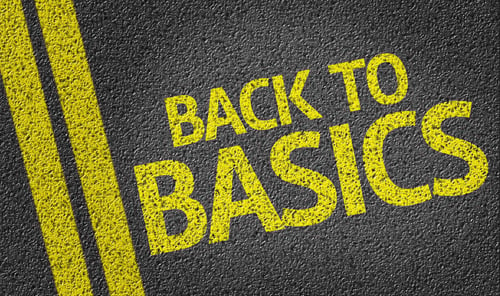Back to Basics
Based on the chaos of the past several years, many sales managers are wondering if we will ever return to a normal sales environment. The answer is probably not. However, as we are slowly entering our new normal world, this may be a good time to reflect on the fundamentals of a successful sales incentive program. Despite the tumult in the marketplace, some basic concepts of recognizing and rewarding your sales team’s efforts will inexorably remain the same. So this is a good time to recall those essential concepts.
Definition of a Sales Incentive Program
Recently Spotio, a CRM management company, described a sales incentive program as a system that rewards salespeople who meet specific goals. Rewards may be monetary or non-monetary. Sales incentive programs are supplemental to the standard compensation structure and are designed to motivate salespeople to exceed their usual performance metrics. Based on this broad definition, we can identify five different types of sales incentives:
- Role-specific - Sales incentives can be structured in a way that suits specific roles such as prospecting, sales support, closing deals, etc. Running concurrent sales incentive programs for different sales rep types might be the best approach.
- Territory-based - This may be a good way to motivate sales teams working in the same territory. In such a scenario, reps would get an equal share of total commissions.
- Presales - For products with a long sales cycle, sales incentives may need to be structured around incremental goals instead of closed deals.
- Multichannel - In some sectors, the sales process may begin with a sales rep and end when a lead makes a purchase online. A closed sale can be tracked back to the rep that originally got a prospect into the sales funnel.
- Analytics-based - Analytics can help companies analyze sales rep behavior and define sales goals more granularly, e.g. length of closing time, etc.
Fundamentals of an Effective Sales Incentive Plan
The characteristics that are critical elements of an effective sales incentive plan include:
-
Clear goals and easy calculations: It is vital that the sales incentive program be clear and simple to understand, with a defined prize.
-
Rewards for specific sales activity: Reward the activity you want sales reps to incorporate in their sales cycle, such as upselling to existing customers or signing new service agreements.
-
Allows for multiple winners: Having more than one winner helps motivate sales teams.
-
Significant and immediate rewards: The longer your team has to wait for the reward, the less motivating it becomes.
-
No caps on earnings: Putting a limit on what a star can earn is the fastest way to get them to stop selling.
-
Includes pace-setting bonuses: A pace-setting bonus, such as a quarterly bonus, is effective at keeping your sales team on track.
-
Uses social pressure elements: An example of using social pressure in the sales incentive plan is to post the standings daily or weekly so everyone can see them.
-
Non-monetary rewards: These are often more effective than monetary rewards.
Righting Your Sales Incentive Ship
These past few years may have blown your Sales Incentive program off course. Our Channel Incentive Technology Platform can steer your company in the right direction. Find out more about how we can help you get back on track.



